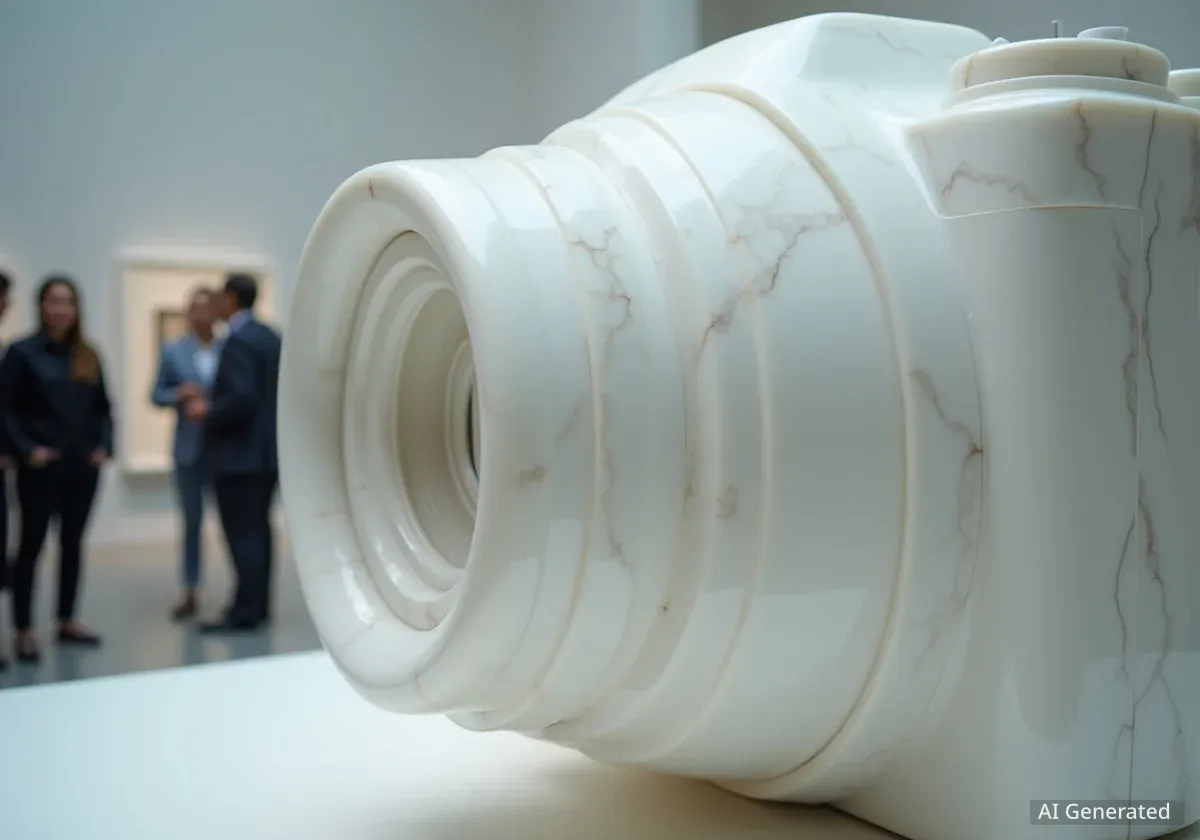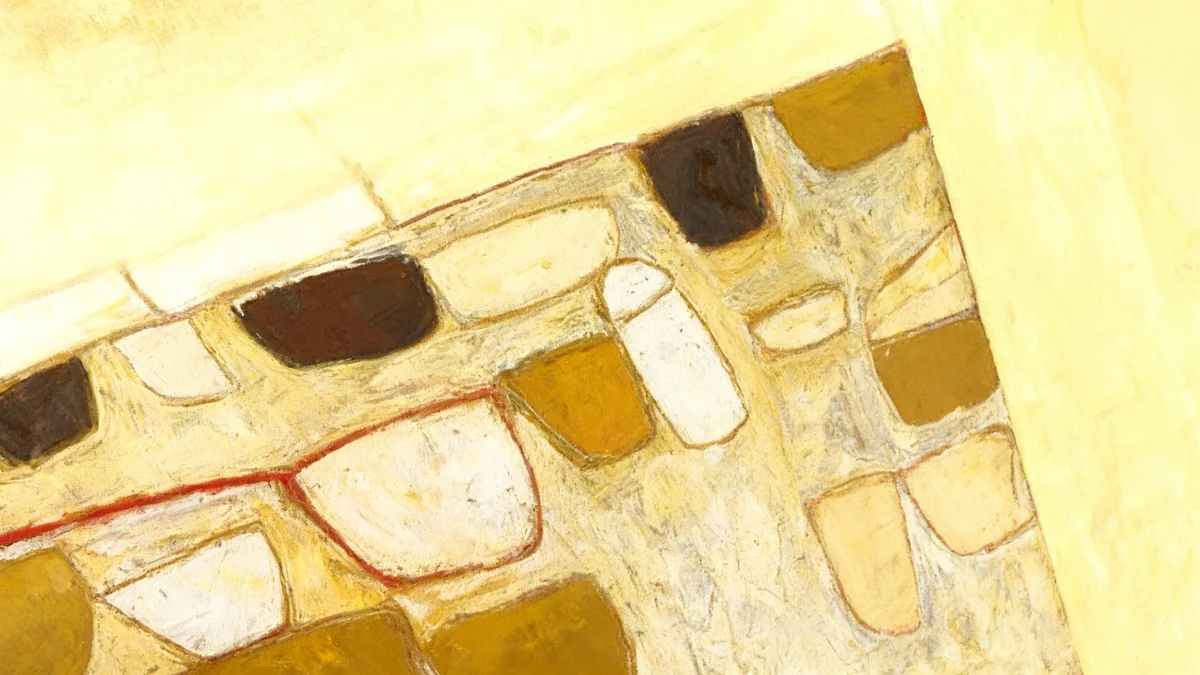Leica, a brand synonymous with precision engineering and luxury photography, has collaborated with Dutch artist Casper Braat to create a series of remarkable sculptures. The project features a massive eight-ton marble replica of the Leica M11 Monochrom camera, now on display in Wetzlar, Germany, alongside a limited edition of ten smaller, yet still substantial, marble cameras available for purchase.
These smaller sculptures, each weighing 170 kilograms (375 pounds), are priced at €50,000, blending the worlds of high art and iconic camera design in a unique and heavyweight tribute to photography.
Key Takeaways
- Leica commissioned Dutch artist Casper Braat to create marble sculptures of its M11 Monochrom camera.
- An eight-ton centerpiece sculpture is currently exhibited at Leica Welt in Wetzlar, Germany.
- A limited edition of 10 smaller sculptures, each weighing 170 kg (375 lbs), are available for sale.
- Each of the 10 sculptures costs €50,000 (approximately $58,000) and comes in a bespoke flight case.
- The project celebrates the 100th anniversary of the first mass-produced 35mm camera, the Leica I.
A Monumental Tribute to Photography
In a bold move that merges fine art with photographic heritage, Leica has unveiled a stunning sculptural project. At the heart of this initiative is a colossal eight-ton sculpture of the Leica M11 Monochrom camera, meticulously carved from a single block of Carrara marble. This monumental piece is the work of acclaimed Dutch artist Casper Braat, known for his precision and artistry in stone.
The sculpture is not just a simple representation; it captures the intricate details of the camera it honors. Every button, dial, and contour of the M11 Monochrom has been rendered in stone, including a matching marble version of the Leica Noctilux-M 50mm f/1.2 ASPH. lens. The entire piece rests on a contrasting base made from black Marquina marble, enhancing its visual impact.
This impressive artwork is currently the centerpiece of Leica’s Celebration of Photography 2025 event at Leica Welt in Wetzlar. The exhibition, which runs until January, also marks a significant milestone: the 100th anniversary of the Leica I, the camera that revolutionized photography by popularizing the 35mm format.
A History of Artistic Collaboration
This is not the first time Leica and Casper Braat have collaborated. In 2023, the Leica Store Lisse in the Netherlands offered a unique, life-size marble sculpture of a Leica M camera created by Braat. That one-of-a-kind piece sold for €3,500, signaling an appetite among collectors for such artistic interpretations of iconic camera designs.
An Exclusive Edition for Collectors
While the eight-ton statue is a one-off exhibition piece and not for sale, Leica and Braat have created an exclusive series for art and photography enthusiasts. A limited run of 10 smaller, yet still imposing, versions of the M11 Monochrom sculpture have been produced. These are not tabletop models; each one weighs a staggering 170 kilograms (approximately 375 pounds).
The dimensions of these sculptures are 73 by 45 by 40 centimeters (about 28 by 18 by 16 inches), making them significant art installations in their own right. The price for one of these limited-edition sets, which includes the marble camera and lens on a marble base, is set at €50,000, or just over $58,000.
By the Numbers: The Marble Leica
- Weight of centerpiece: 8 tons
- Weight of limited edition sculptures: 170 kg (375 lbs)
- Price per limited edition sculpture: €50,000 (~$58,000)
- Number of limited editions available: 10
- Material: Carrara and Marquina marble
Uncompromising Precision in Stone
The attention to detail in the limited-edition sculptures is a testament to both Leica's brand ethos and Braat's craftsmanship. Each piece is designed to be an exact, scaled-up replica of the real camera, maintaining fidelity to the original design.
"Every detail is executed with uncompromising precision: each marble sculpture carries the same limited-edition number as its corresponding camera and lens, creating an unbreakable one-to-one connection. From the engraved serials to the markings on the lens, fidelity is absolute," explained a representative from Leica Store Lisse.
This statement highlights the unique connection between the artwork and the camera itself. The engraved details, including serial numbers, are not just decorative but are meant to create a direct link to the functional cameras that inspire them. To ensure their safe transport, each of the 375-pound sculptures is shipped to its new owner in a custom-built, bespoke Leica flight case.
The Intersection of Art and Technology
Leica's decision to commission such an extravagant project speaks to the company's long-standing position as more than just a camera manufacturer. The brand has cultivated an image of luxury, craftsmanship, and artistic expression. Its cameras are often viewed not merely as tools but as objects of desire and design classics.
This project elevates that perception to a new level. By transforming the M11 Monochrom—a camera celebrated for its minimalist design and focus on the art of black-and-white photography—into a massive marble monument, Leica is making a powerful statement about the enduring beauty and cultural significance of its products.
The choice of Casper Braat as the artist is also significant. His ability to work with a traditional medium like marble to replicate a piece of modern technology with such precision creates a fascinating dialogue between the ancient and the contemporary. The result is an artwork that challenges perceptions of what a camera can be, transforming it from a functional device into a timeless piece of sculpture.
For collectors, this limited series offers a rare opportunity to own a piece that sits at the unique intersection of photographic history, technological design, and fine art. It is a celebration of form, function, and the legacy of a brand that has shaped the way we see the world for a century.




